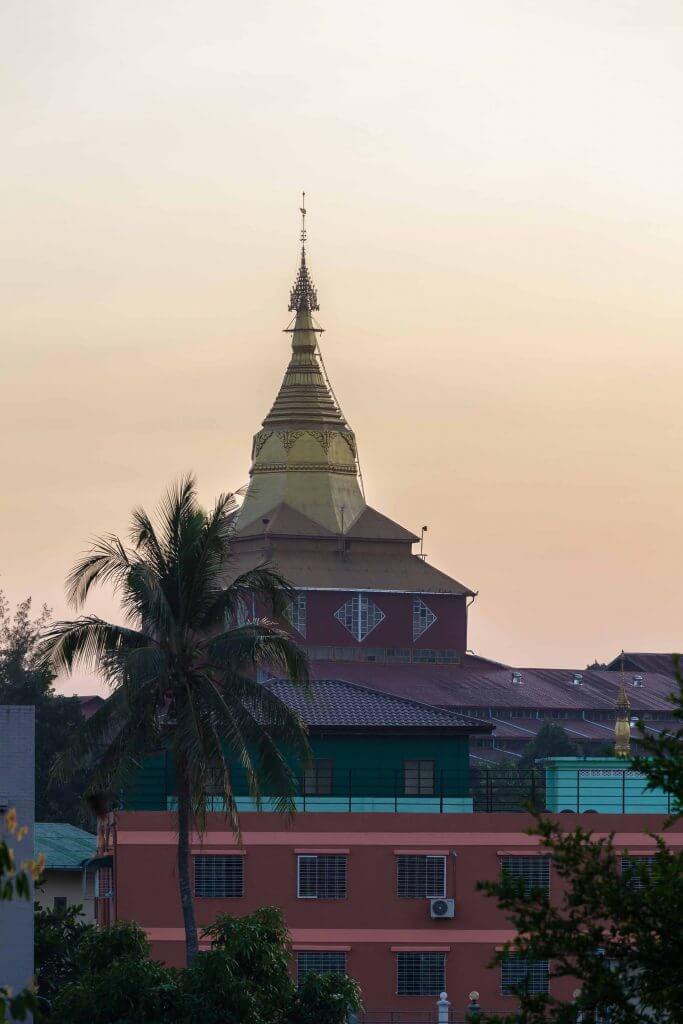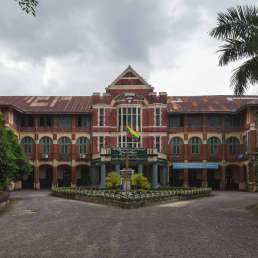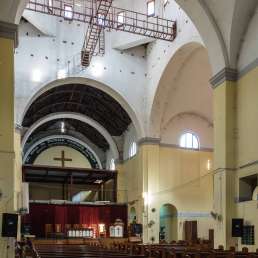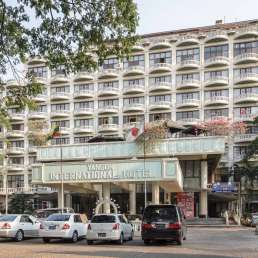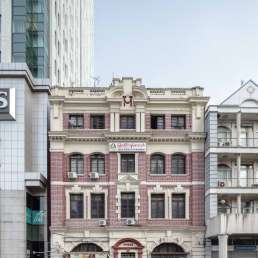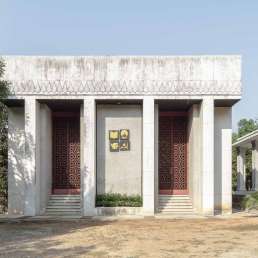Otherwise: Seated Buddha
Address: Shwegondaing Lane
Year built: Early 20th century
Architect: Unknown
You may want to approach this vast monastery complex (called Ashay Tawya) from the south, by following the Bogyoke Aung San Museum Lane. Its peaceful setting offers a respite from traffic-choked Yangon. Between its winding pathways and scattered buildings, visitors are likely to encounter monks in meditation. There are teak and stone buildings; one stone edifice is painted a striking pink. Inside the central Ngadatgyi Pagoda, the impressive seated Buddha statue rises 20 metres high (which explains why this Buddha is known as the “five-storey Buddha”). The statue has the Buddha doing the Bhumisparsa Mudra or “earth witness” hand gesture, which he made while achieving enlightenment under the Bodhi tree: at that moment, the demon Mara tried to intimidate the Buddha with an army of monsters; the Buddha made this gesture to beckon the Earth to bear witness to the moment. Mara cowered away and the Buddha realised enlightenment.
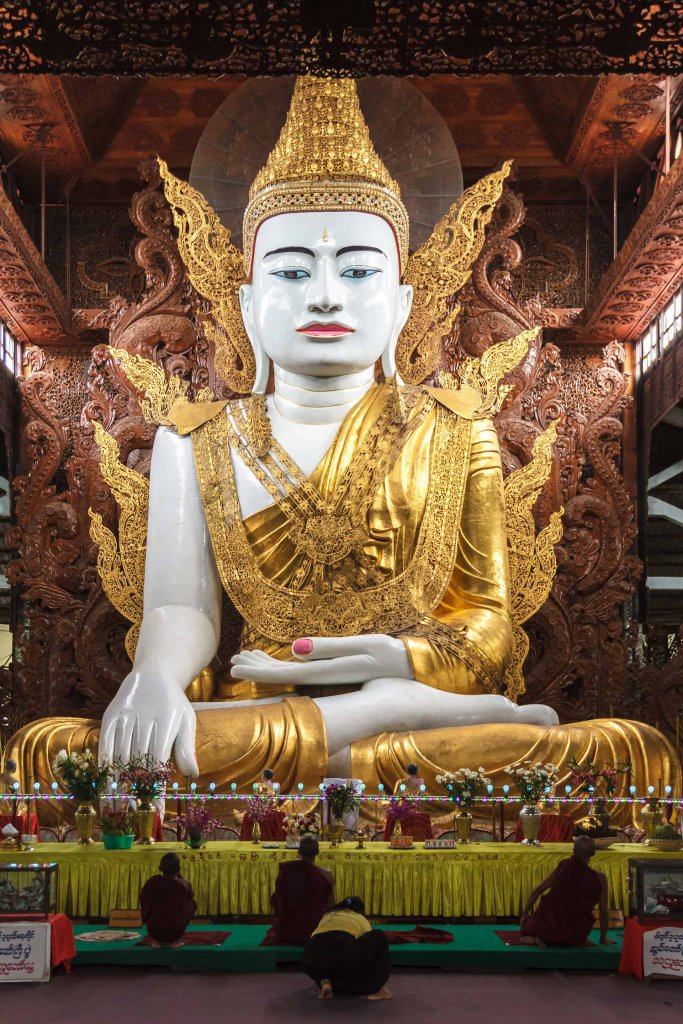
The seated Buddha statue was at, or near, its current location when the pagoda was constructed in the early 20th century. A photo from 1895 shows it in a partially ruined state, surrounded by the pillars of a former pavilion.
The pagoda and the Buddha statue were renovated during the early 1990s by the SLORC junta. The building or renovation of Buddhist religious structures was one of its favoured tools to try to mobilise public support.
